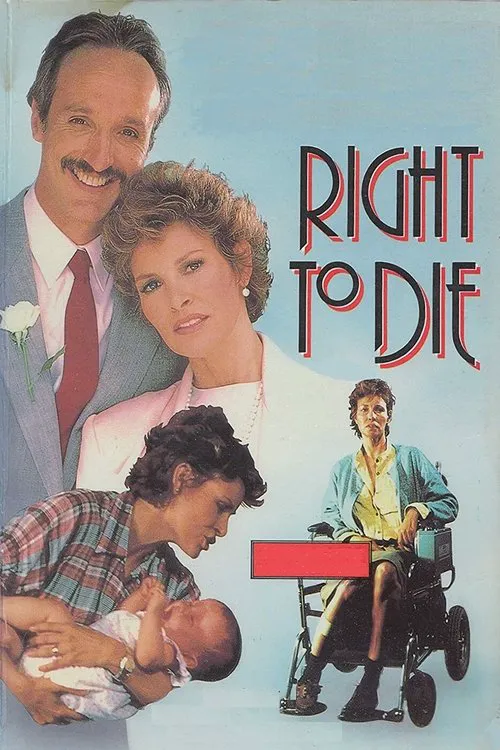Right to Die

Plot
The television movie "Right to Die" released in 1986, a heart-wrenching drama starring the iconic actress Raquel Welch, tells the poignant and thought-provoking story of a woman's grueling battle with the debilitating and incurable disease Amyotrophic Lateral Sclerosis (ALS). As the narrative unfolds, the audience is taken through a journey of Emily Bauer's relentless fight against the merciless disease, which ravages her physical and mental faculties at an alarming rate. We are introduced to Emily as a vibrant, successful psychologist in her prime, married to a loving husband, Tom (Michael Gross). Her life is filled with purpose and contentment, with a thriving career and a beautiful home life. However, fate has other plans. One day, Emily suffers a series of inexplicable and debilitating episodes, which eventually lead to a diagnosis of ALS, a condition characterized by the gradual degeneration of motor neurons, rendering patients unable to speak, swallow, or even move on their own. Initially, Emily is consumed by denial, anger, and a fierce determination to fight the disease with every ounce of strength she possesses. With Tom by her side, she embarks on a rigorous treatment schedule, undergoing countless visits to doctors, therapists, and specialists, all with the hope of reversing the relentless progression of the disease. Despite the odds, Emily remains resolute, convinced that science will ultimately find a cure for this insidious condition. As the weeks turn into months, and the months into years, Emily's condition begins to deteriorate at an alarming rate. Her body begins to betray her, and she finds herself slipping further and further away from the life she once knew and loved. The disease takes its cruel toll, rendering her progressively immobile, unable to express herself through speech or even simple gestures. Despite the grueling reality of her situation, Emily's spirit remains unbroken, but her resolve eventually gives way to the unbearable pain, frustration, and sense of hopelessness that accompany the relentless decline. As she becomes increasingly trapped in a prison of her own flesh, Emily's thoughts begin to shift from a desperate quest for survival to a quiet acceptance of her mortality. A profound shift in Emily's perspective dawns upon her, and she begins to beg her devoted husband to help her die. In a poignant scene, she implores Tom to assist her in ending her suffering, revealing the depth of her emotional despair and the unbearable burden she has become. As Tom struggles to come to terms with his beloved wife's desperate plea, he is forced to confront the harsh realities of his own inability to protect her from the ravages of this merciless disease. As the narrative hurtles towards its inevitable conclusion, Emily's story becomes an intensely personal and deeply moving exploration of the complexities surrounding the right to die. The film raises fundamental questions about the sanctity of human life, the value of suffering, and the limits of medical intervention. Through this harrowing portrayal, the "Right to Die" paints a nuanced and empathetic portrait of a woman who, in the face of unimaginable suffering, must confront the limits of her own existence and the limits of medical science. Ultimately, Emily's courageous struggle offers a profound tribute to the indomitable human spirit and serves as a powerful testament to the enduring power of love, compassion, and acceptance.
Reviews
Recommendations


